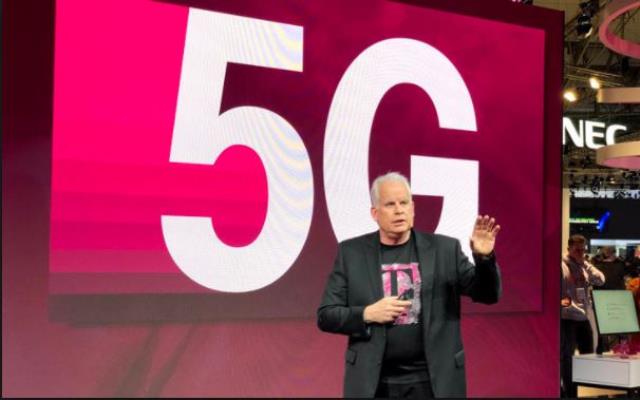T-Mobile announced the availability of 5G service in another 121 cities and towns with mid-band 5G, delivering up to gigabit-per-second peak speeds and average download speeds around 300 megabits-per-second for capable 5G devices.

T-Mobile is lighting up 2.5 GHz mid-band spectrum, bringing customers in those areas average speeds that are 7.5x faster than LTE today. Mid-band spectrum provides the ideal balance of coverage and speed, and the Un-carrier has more mid-band spectrum than anyone else in the U.S.
With today’s announcement, T-Mobile’s 5G experience is live in 210 cities and towns across the country. T-Mobile is lighting up 1,000 mid-band 5G sites a month.
Neville Ray, president of Technology at T-Mobile, said: “It would be easy to deliver fast speeds that are only available less than 1 percent of the time, like Verizon, but T-Mobile’s strategy is different. With more low and mid-band spectrum than anyone in the U.S. and dedicated airwaves for 5G, only T-Mobile is delivering 5G with both coverage and speed.”
T-Mobile is strengthening 5G network coverage by adding up more towers and spectrum. T-Mobile has added 10x more mid-band sites in New York City, one of the first places to get mid-band 5G (2.5 GHz) from the Un-carrier.
The additional sites added 25x more mid-band 5G coverage and 10x more mid-band capacity than before.
T-Mobile has the first and largest nationwide 5G network, covering over 250 million people across 1.3 million square miles — that’s bigger than AT&T and Verizon’s 5G networks combined.
T-Mobile’s 2.5 GHz 5G delivers blazing fast speeds and expansive coverage with signals that can go through walls, windows and trees, unlike 5G networks limited by mmWave spectrum. Each mid-band 2.5 GHz 5G site can cover tens of thousands of times the area that one mmWave site can cover and can also penetrate obstructions like walls.
On other carriers, like Verizon, fast 5G speeds come at the expense of coverage and are only available in small pockets of a few dozen cites.
While Verizon and AT&T acknowledged the need for low and mid-band spectrum for 5G coverage, they don’t have spectrum like T-Mobile does.
Verizon and AT&T’s path to broadening 5G is to steal bandwidth from other smartphone customers through Dynamic Spectrum Sharing (DSS). The other guys will split their low and mid-band spectrum between 4G and 5G, effectively sharing lanes from their current 4G smartphone highway.
T-Mobile is adding 5G lanes to its network with dedicated low-band 600 MHz spectrum and mid-band 2.5 GHz from Sprint.
While Verizon bet on limited mmWave spectrum for 5G, T-Mobile believed 5G would live in all spectrum bands with its “layer cake” multi-band strategy.





